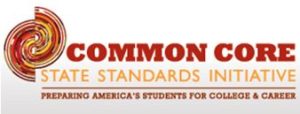The Mathematics Common Core State Standards (CCSS) were finalized and published two years ago with all but four states adhering to their concepts and processes. There are two national assessment consortia charged with the development of the CCSS assessment system – The Partnership for Assessment of Readiness for College and Careers (PARCC) and Smarter Balanced Assessment Consortium (SBAC).
Mathematics professional groups, publishers, assessment partners, state educational systems , and school districts offer a myriad of resources to assist educators for understanding , aligning and mapping curriculum, engaging students using the mathematics practices, and assessing for student understanding.
Several years ago I wrote a blog entitled, Proportional Reasoning Linked to the Common Core Standards and Other Helpful Tools (https://ctlonline.org/blog/?p=2342) and in that post was listed the CommonCoreTools blog as a useful and current CCSS tool. One of the authors is Bill McCallum. Since that time there has been an abundance of sources that are potentially very helpful to any professional in using the CCSS to engage students in learning mathematics.
There are many days that I open my e-mail or professional journals and discover yet additional CCSS resource(s). How can we track all of these resources? Which ones are the most useful in providing coherent sequencing of learning; prototypes of how a particular strategy might play out instructionally; assessment prototypes; and which one(s) best connect(s) to where my students are, I am instructionally, my district in offering support, and parental understanding?
The question is how in the world do you keep track of all these resources so as to optimize their usefulness – sometimes I am literally overwhelmed with all of this information.
Roland O’Daniel and I would like for this blog to be interactive and invite each of you to post resources that have been helpful to you and are willing to share with others – let’s help each other out. We will begin the process, please join us, and add to the list.
Please post your source and any notes that will be useful to our colleagues. Roland and I in turn will keep track of the resources and share with all the readers.


